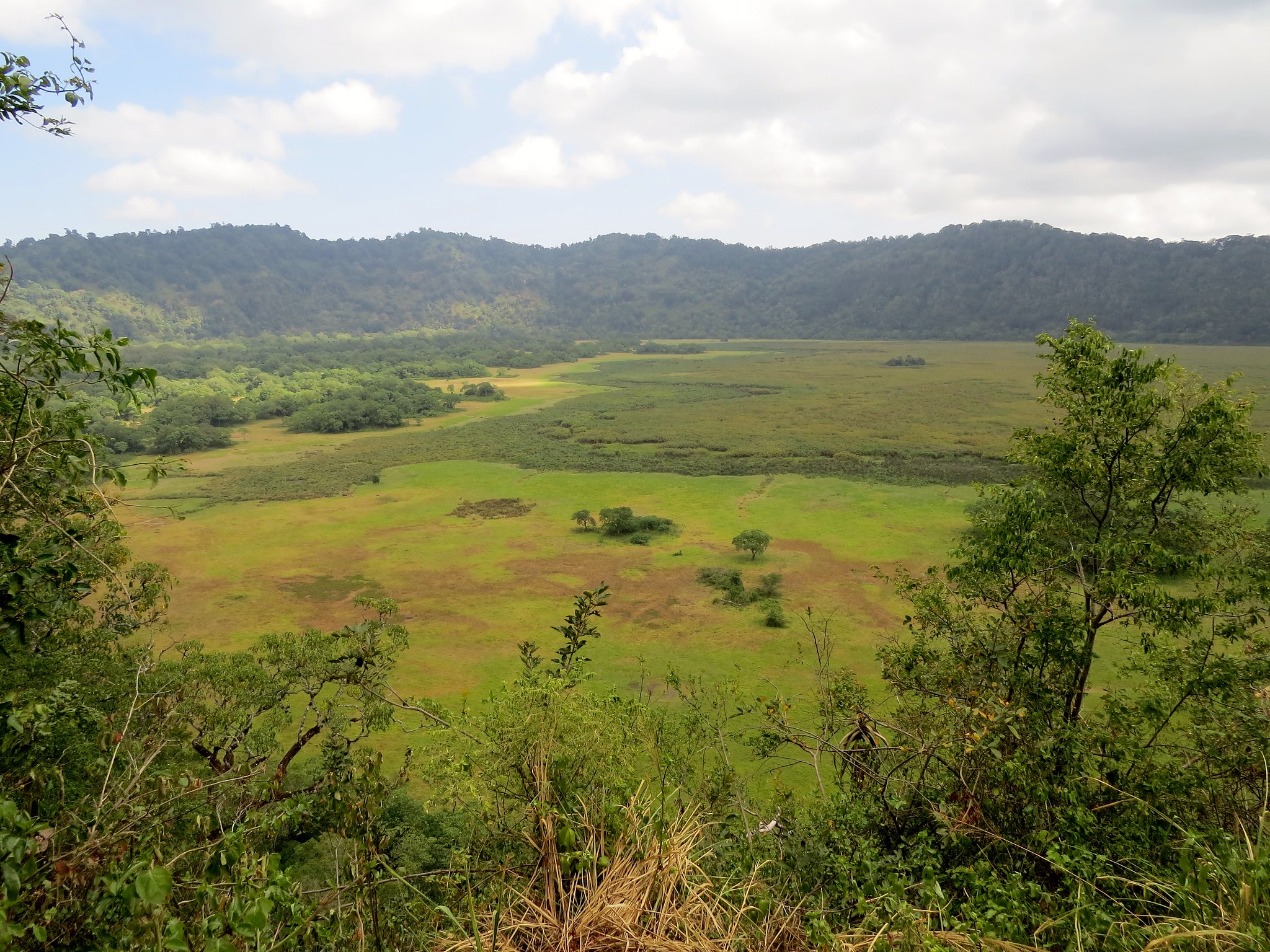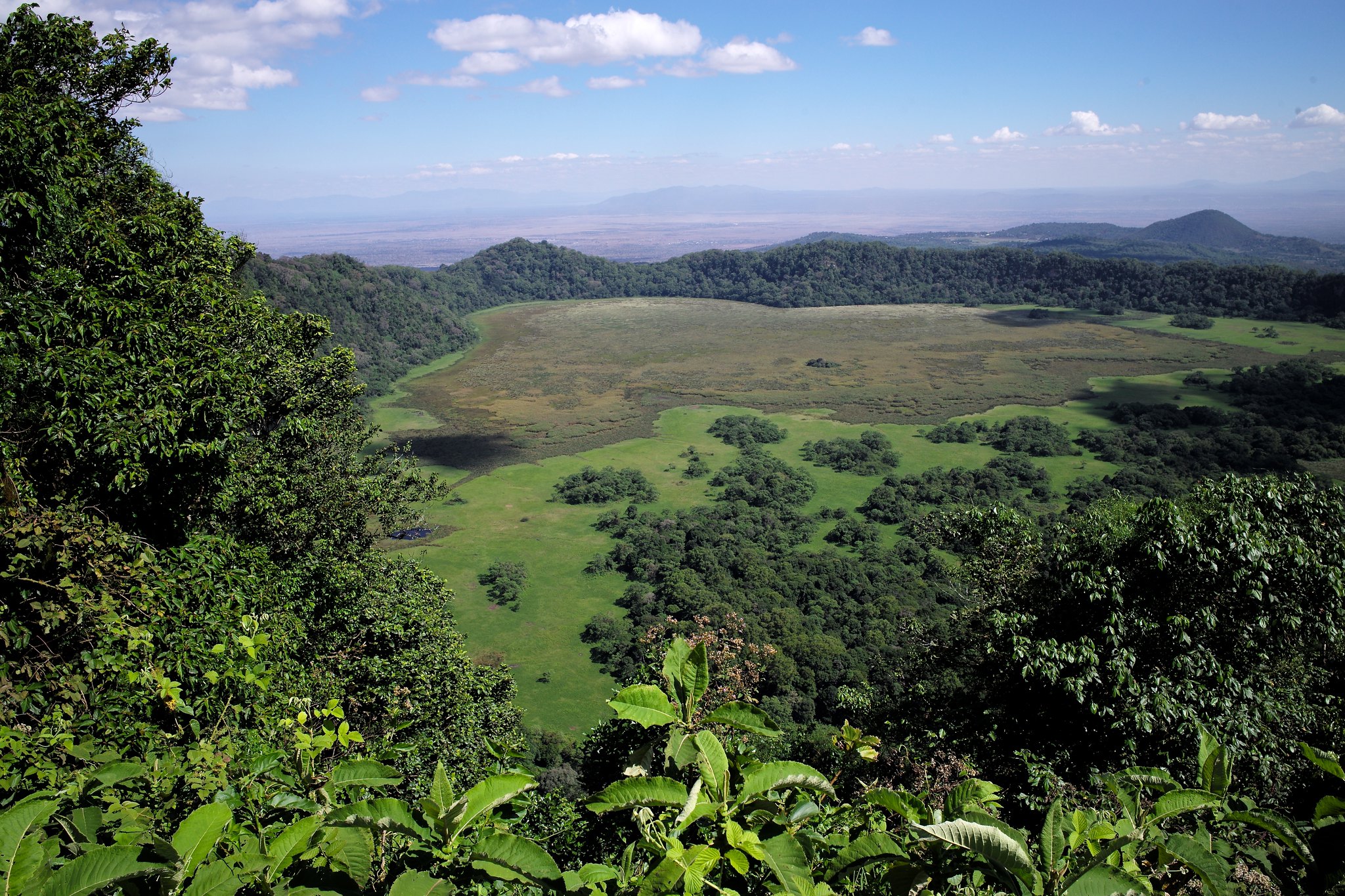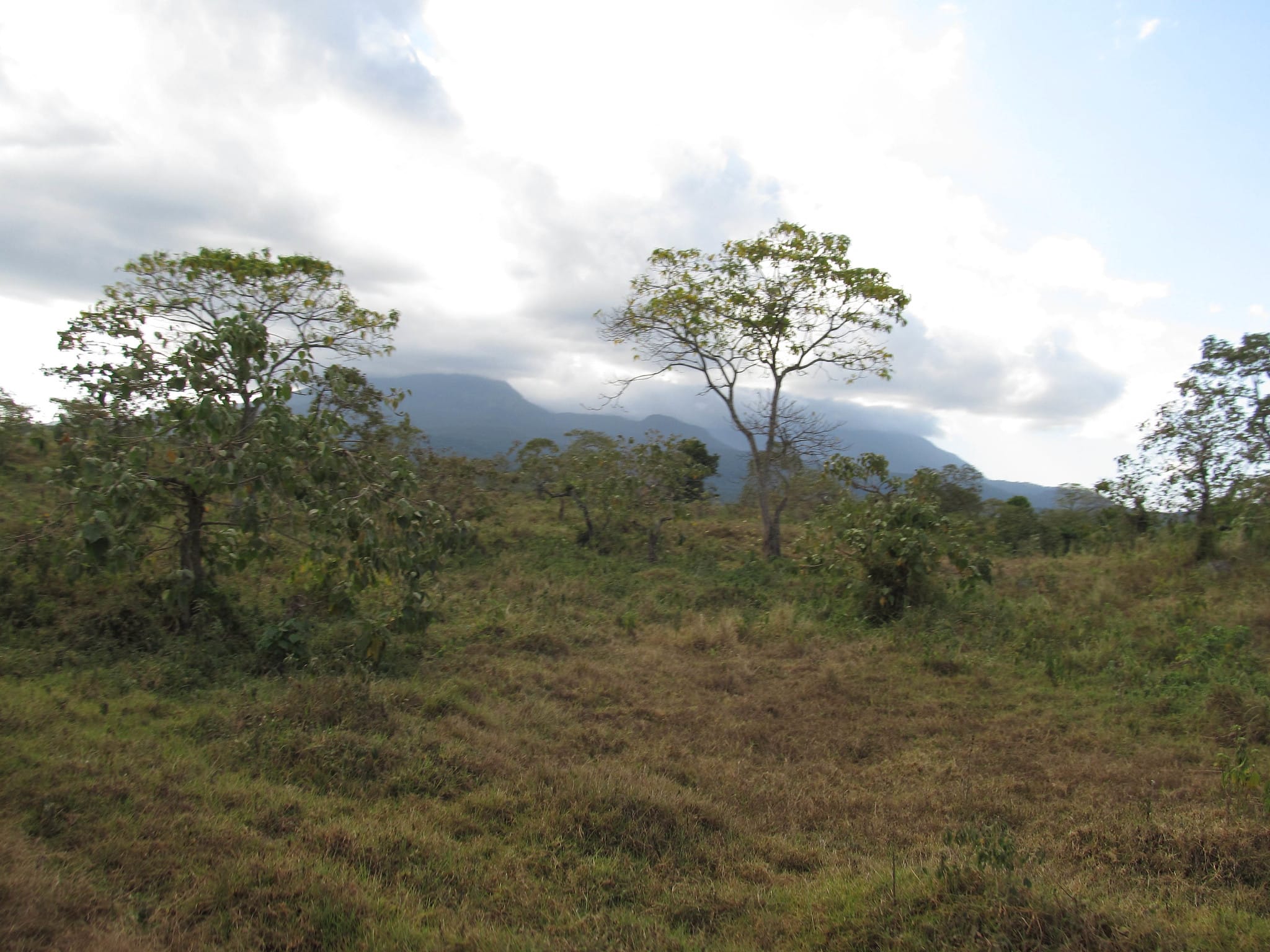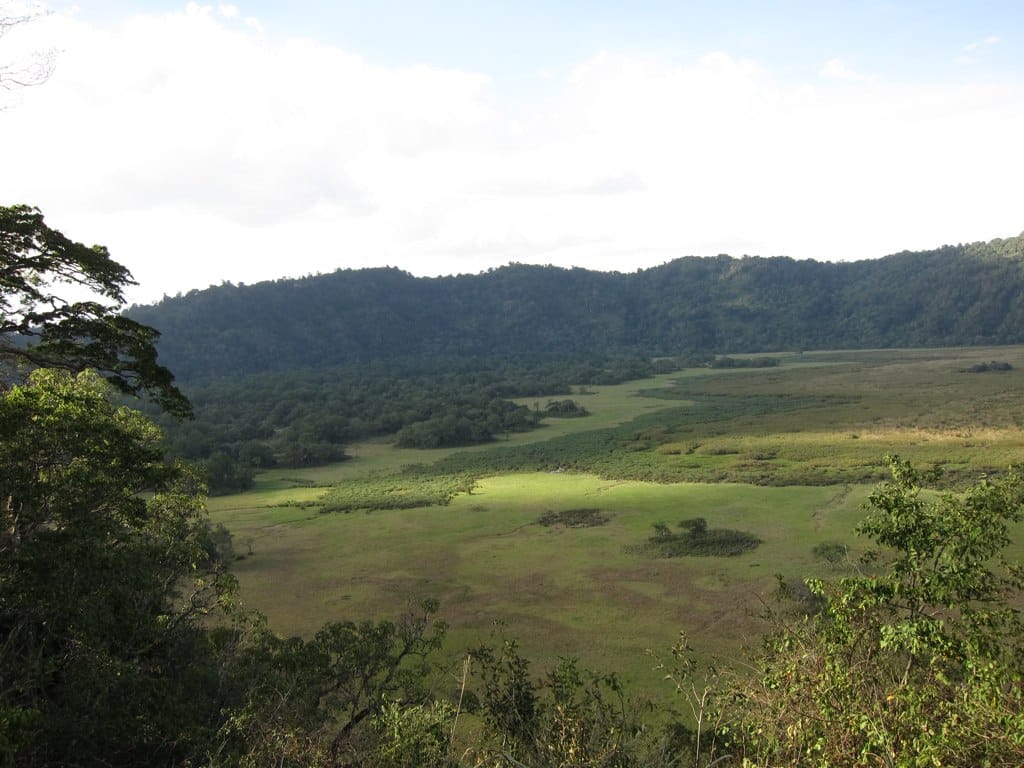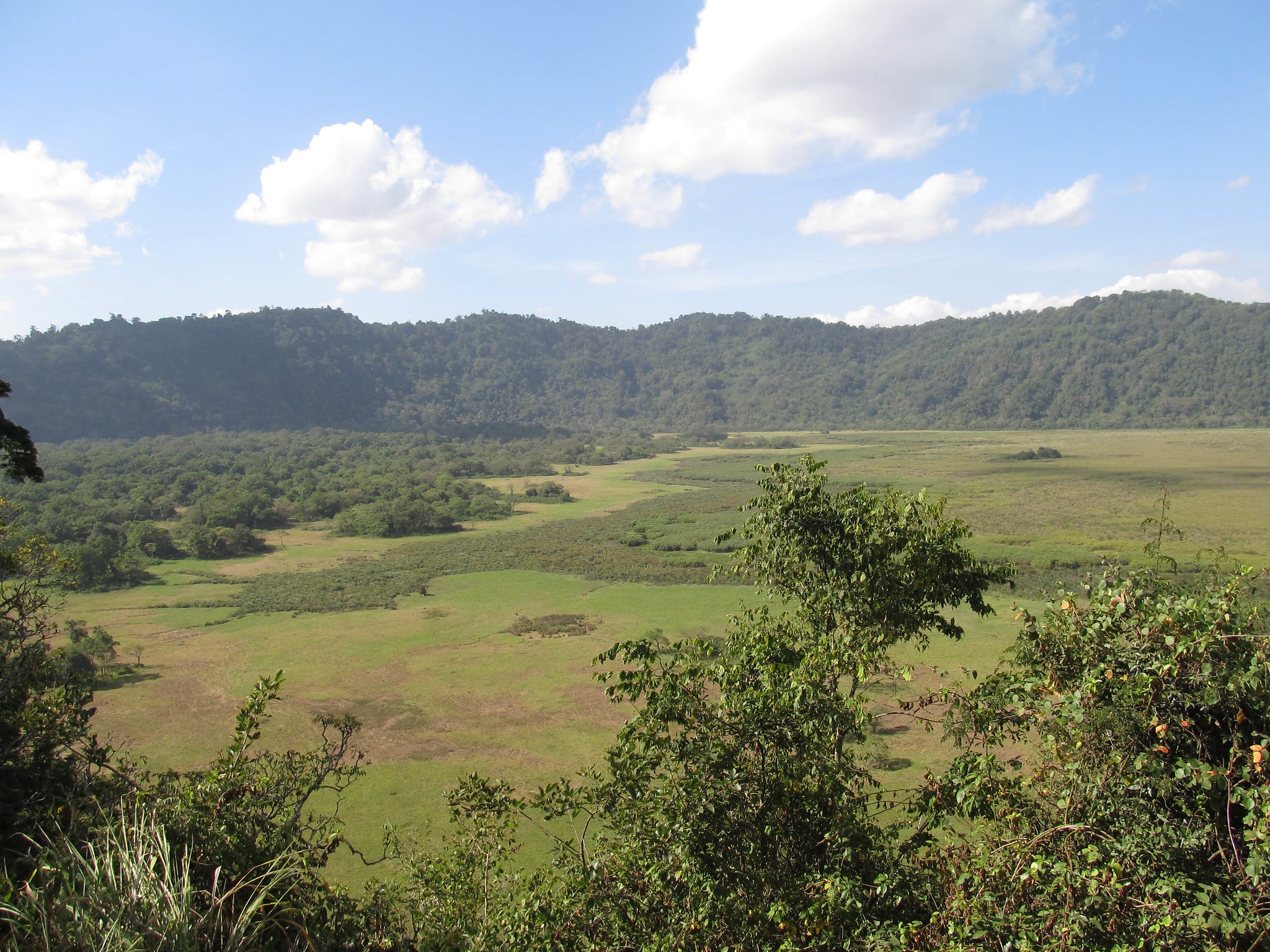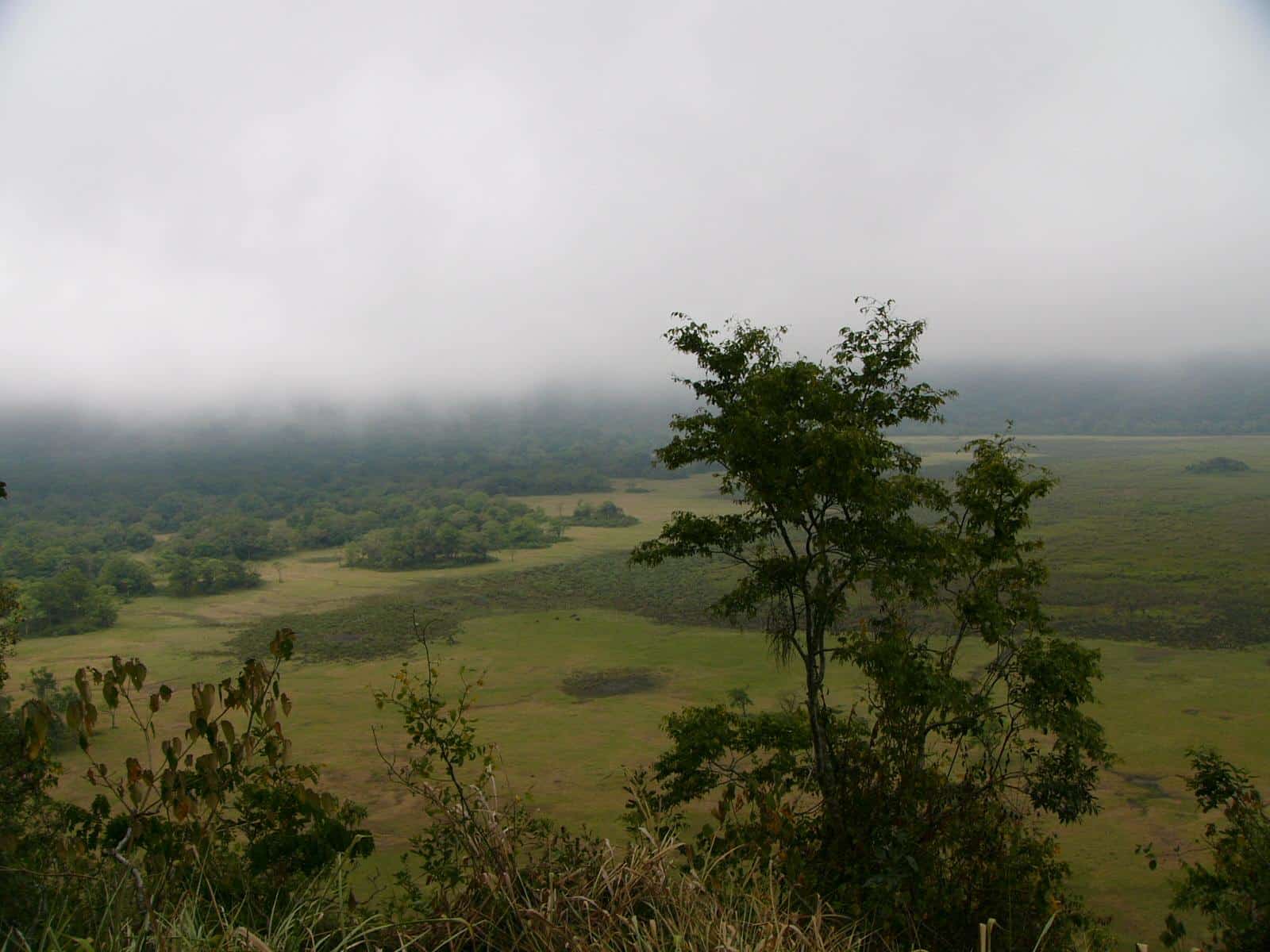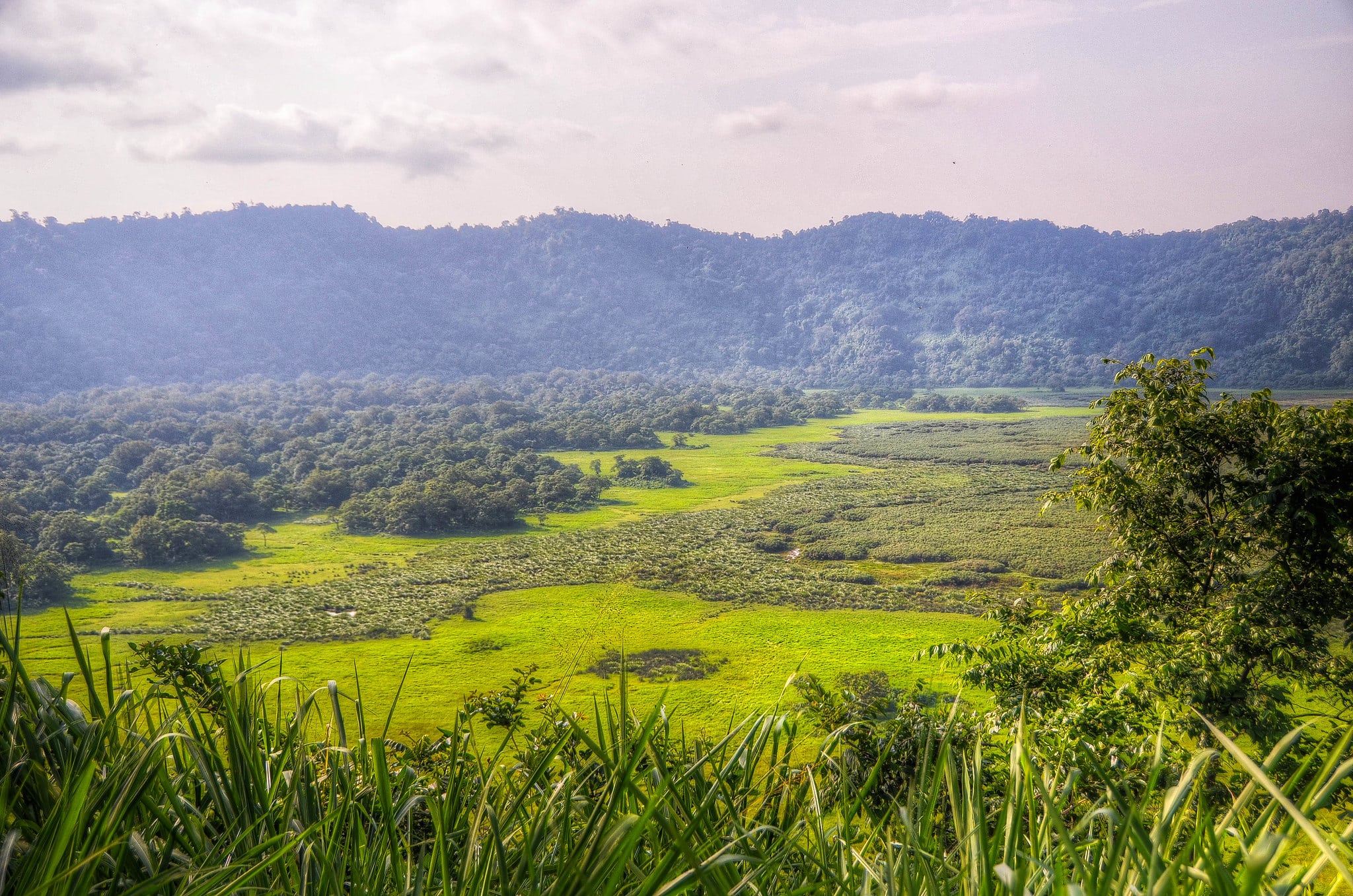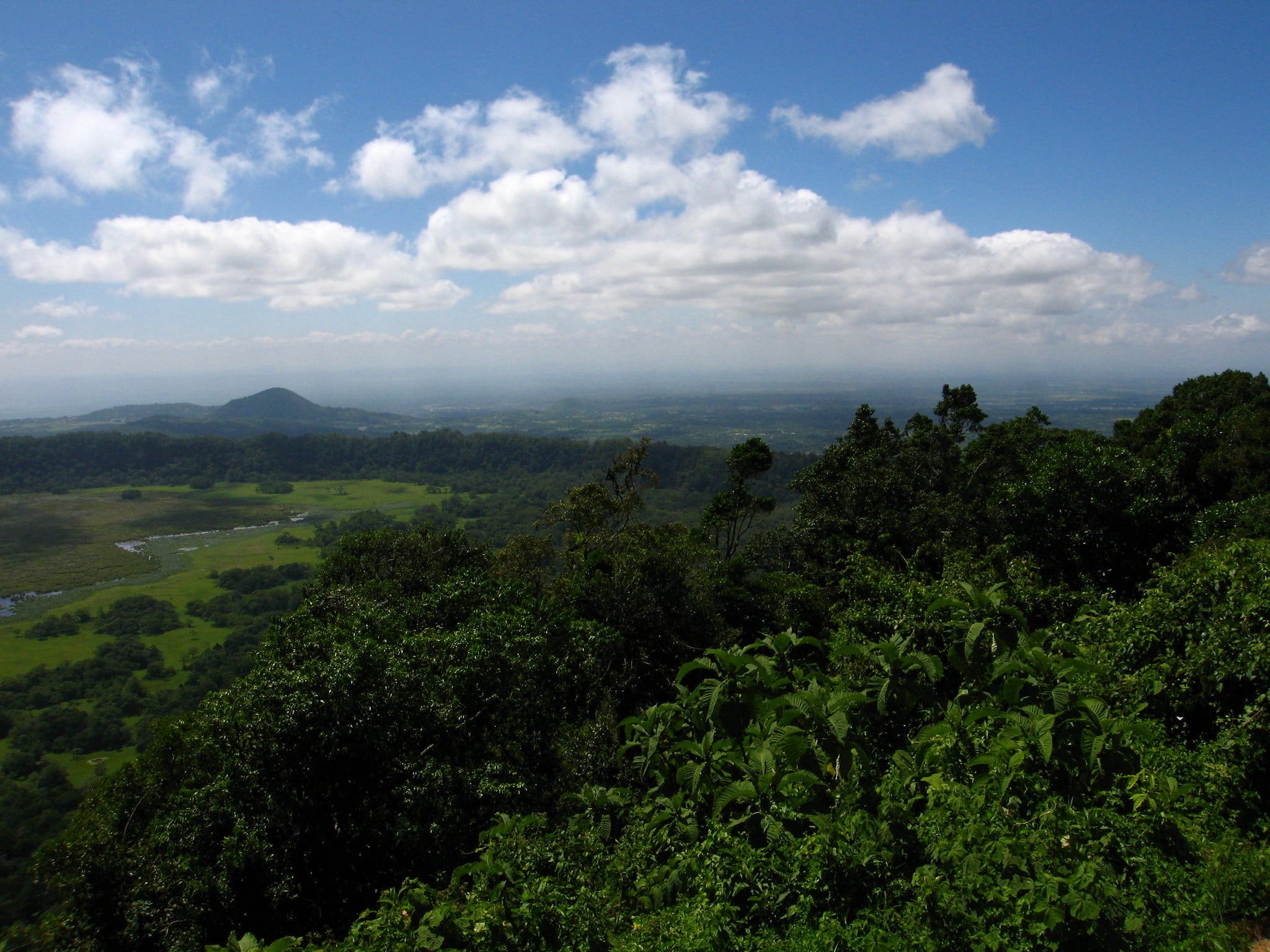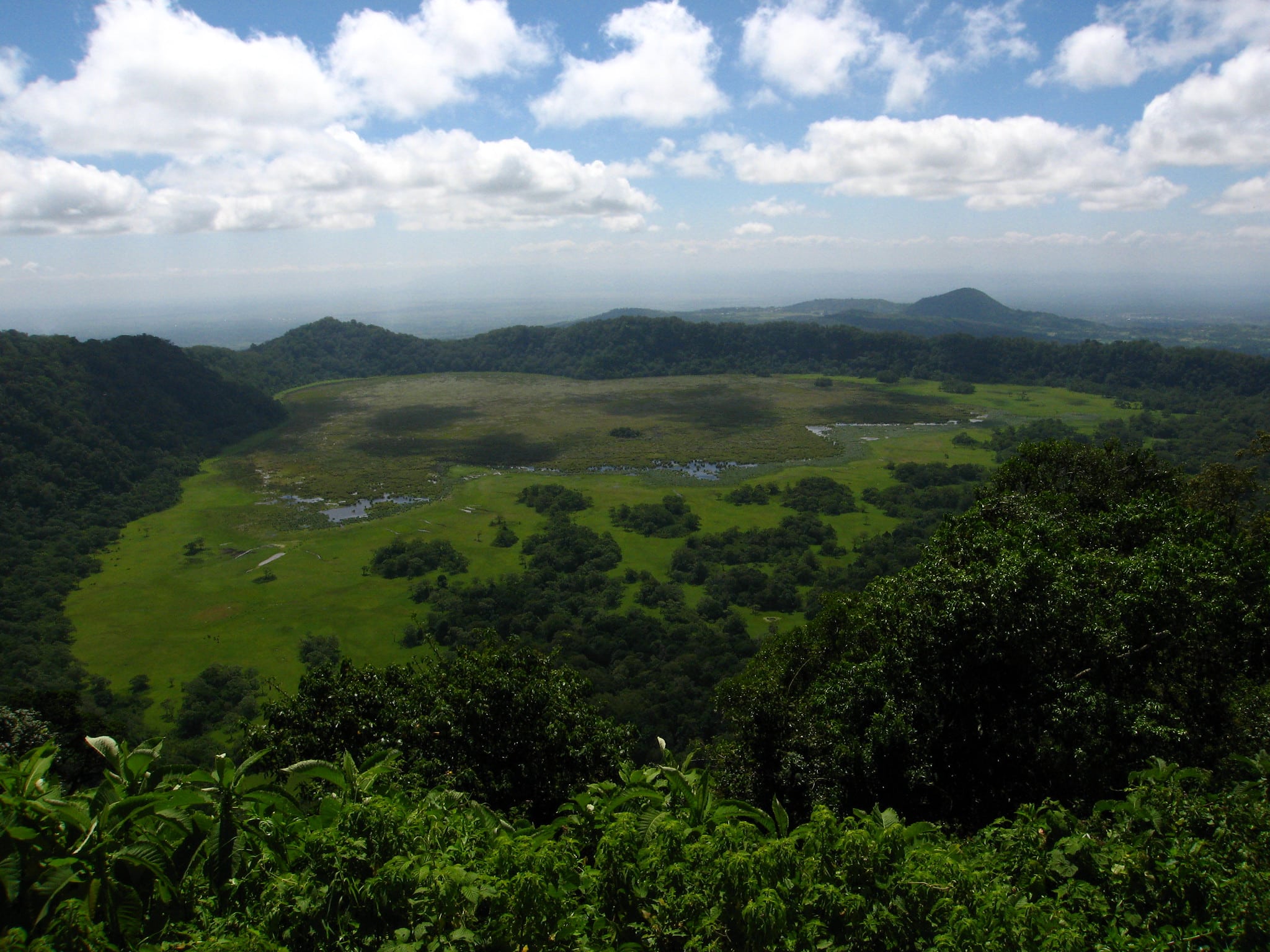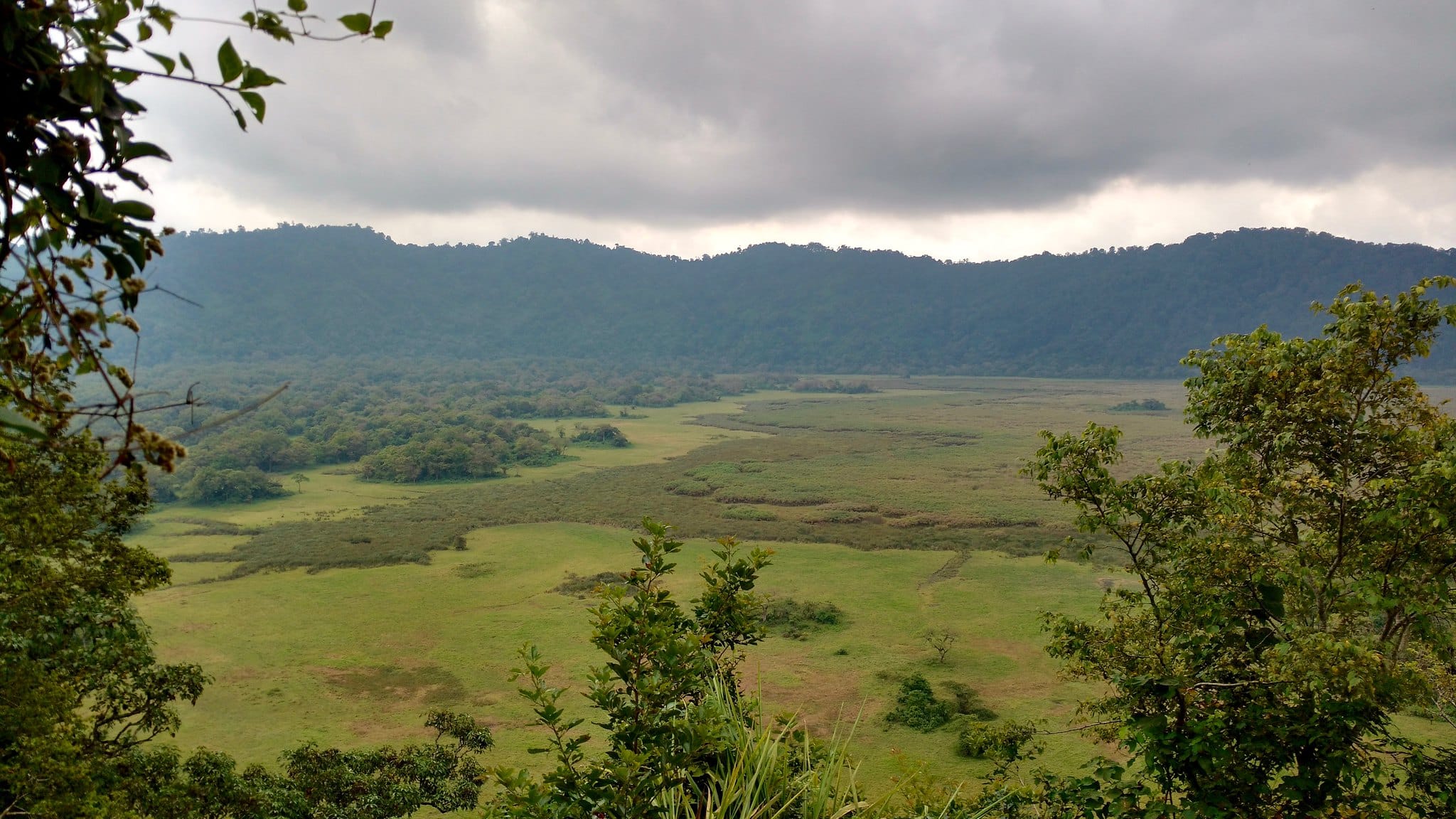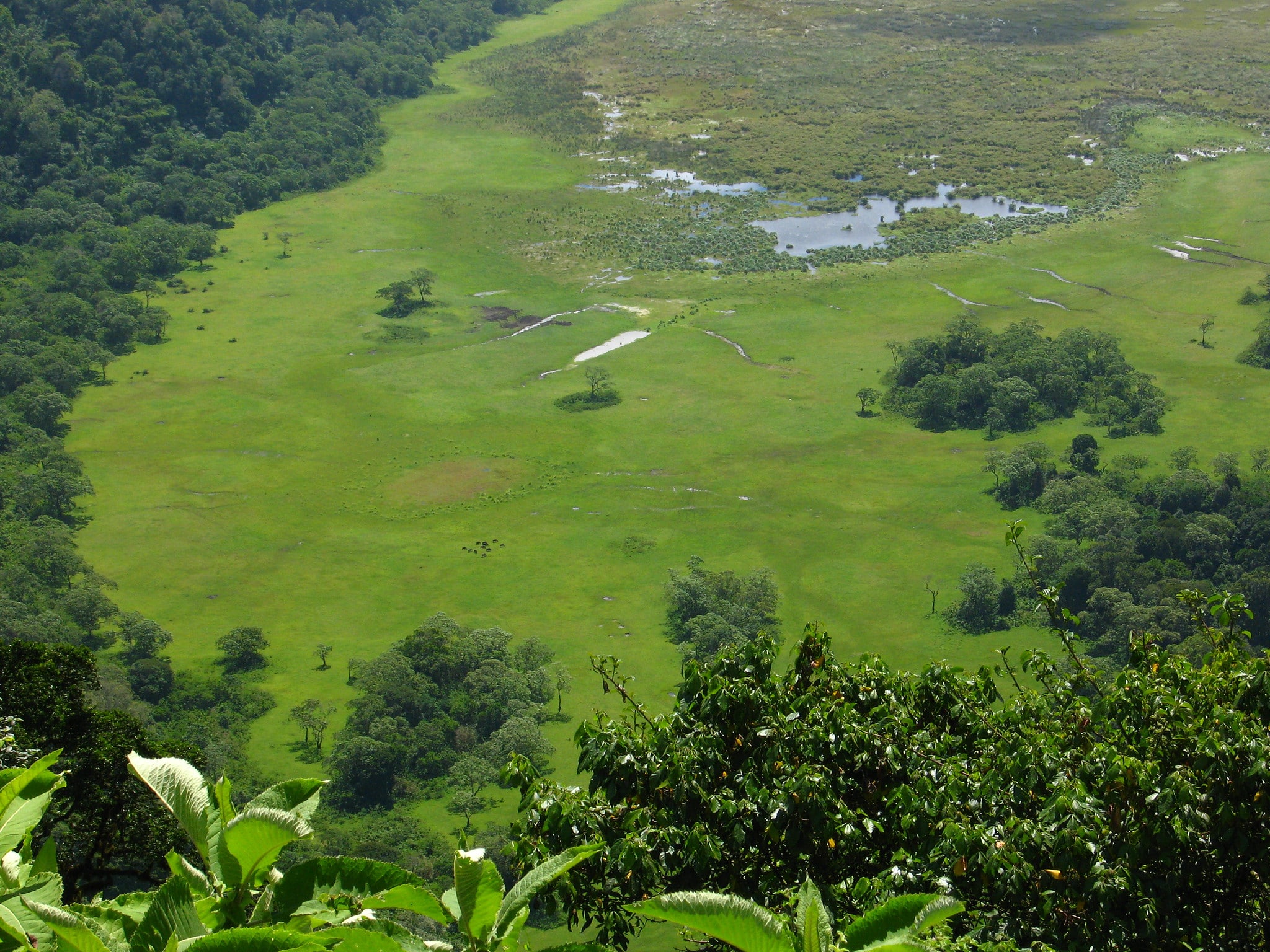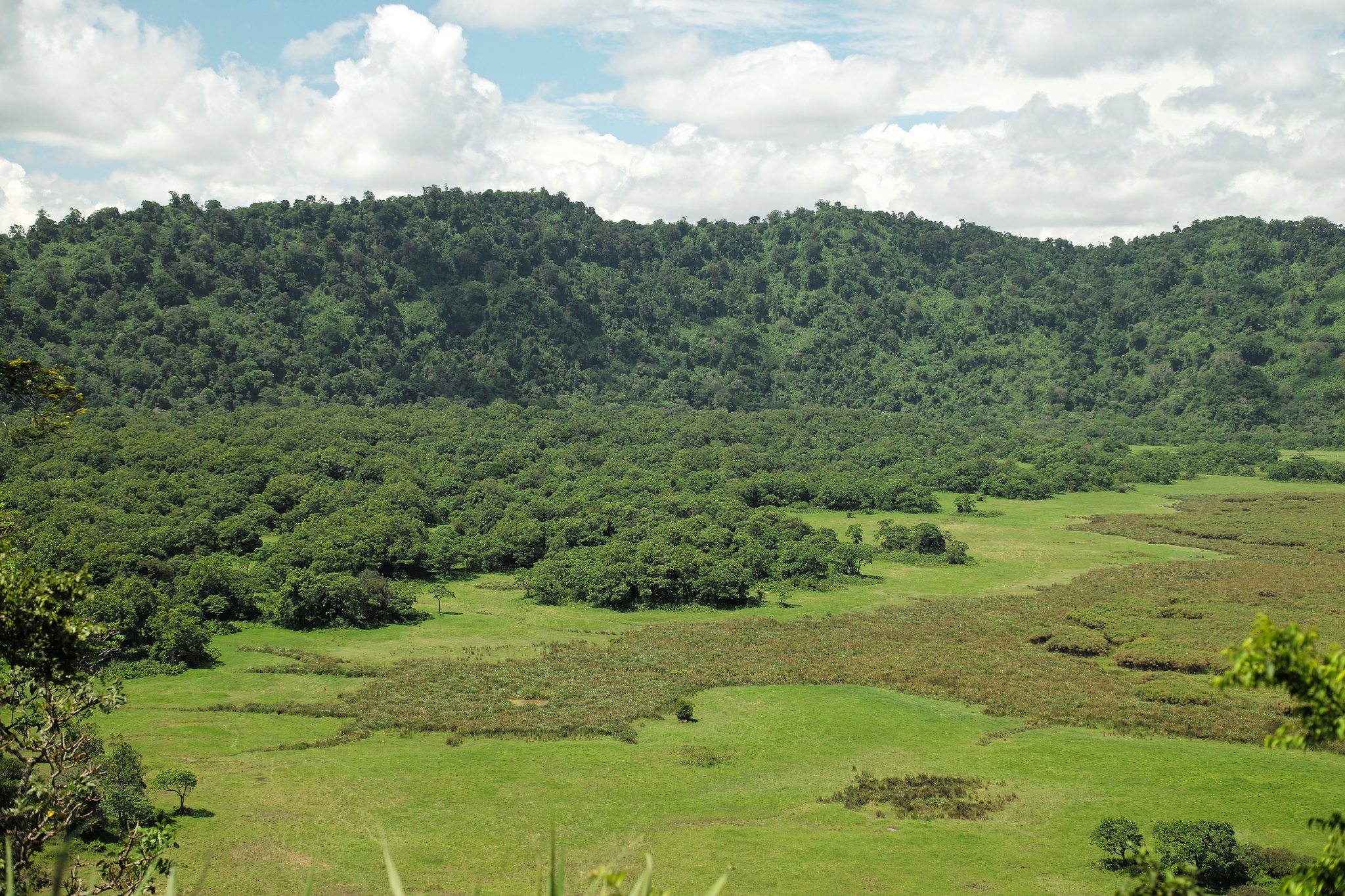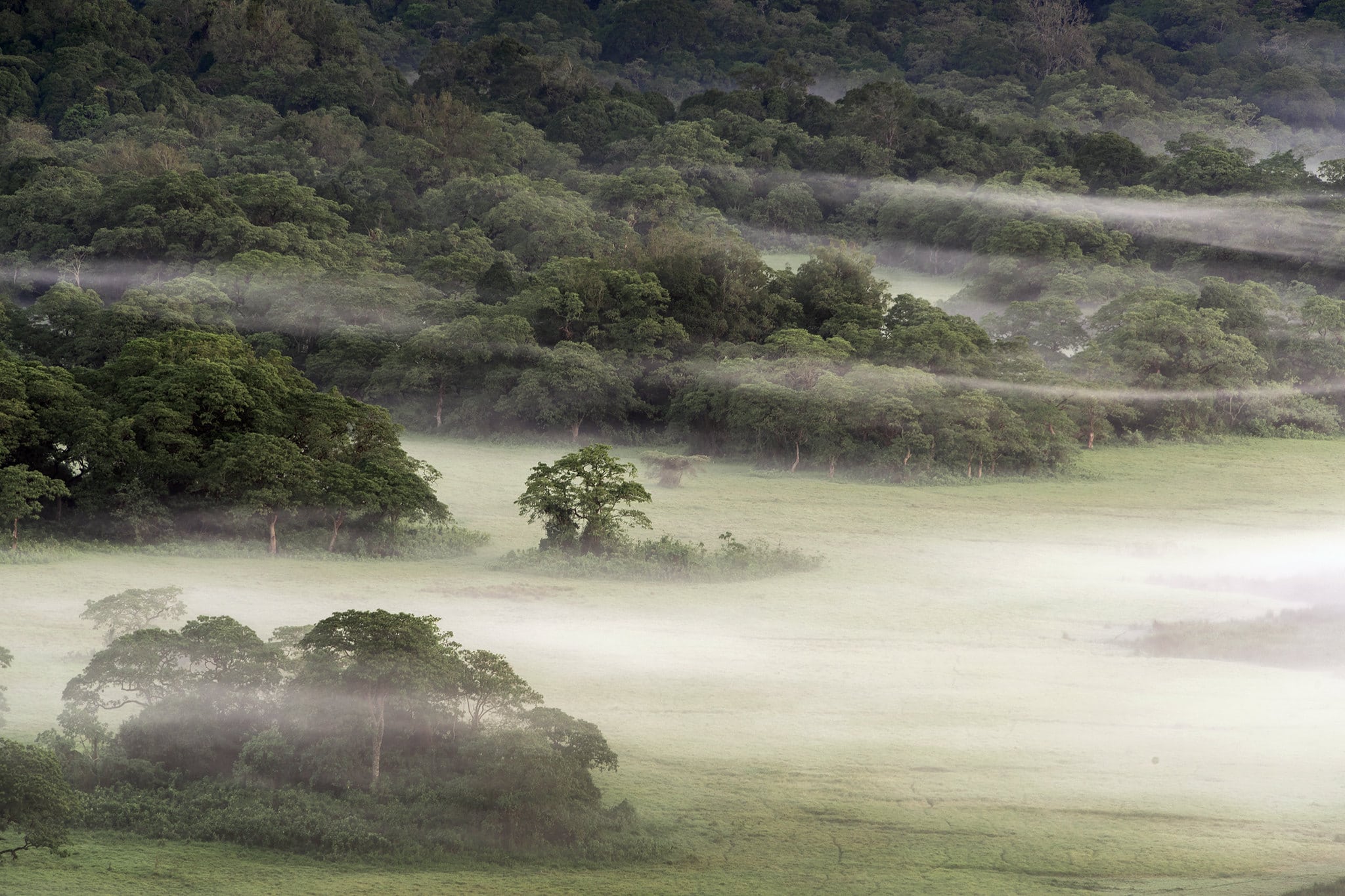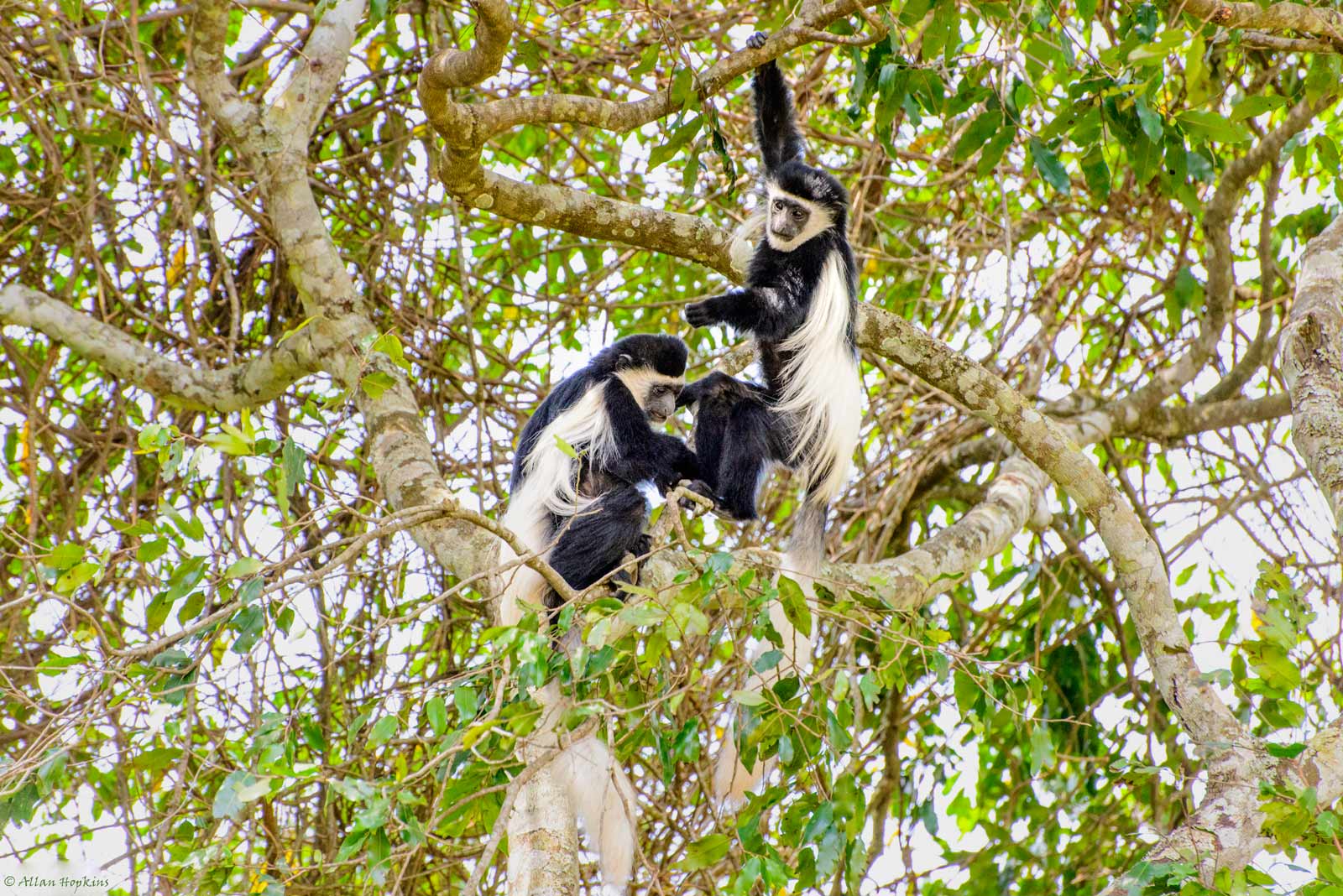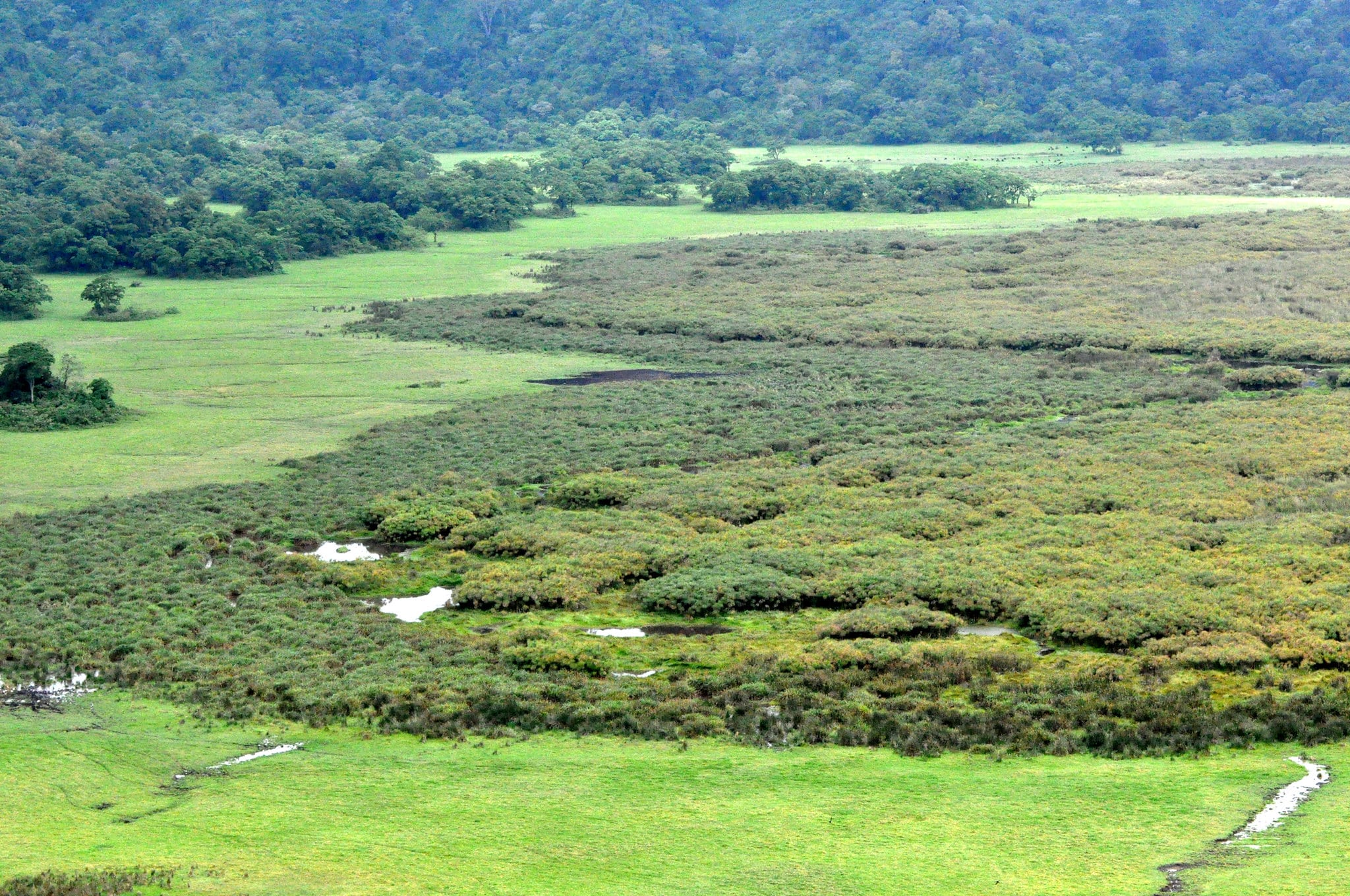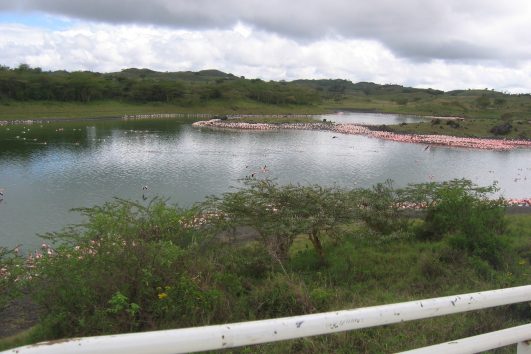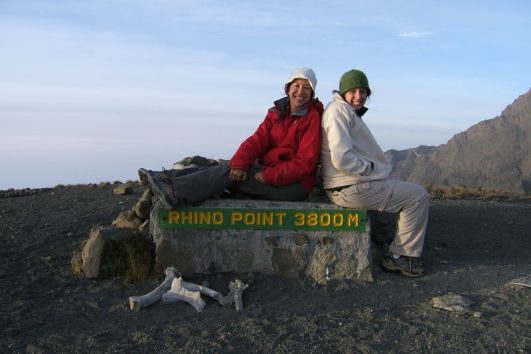Ngurdoto Crater Altitude: 1,400 m Above Sea Level.
Ngurdoto Crater is a collapsed caldera situated within the pristine landscape of Arusha National Park, stands as a testament to the raw beauty and geological wonders of Tanzania. This caldera, formed by an extinct volcano, is often likened to a “little Ngorongoro” due to its resemblance and its role as a sanctuary within a sanctuary.
The crater boasts a remarkable landscape, characterized by a basin-shaped expanse with towering walls cloaked in dense rainforest. Stretching 3 kilometres wide and plunging 400 meters deep, the caldera creates a dramatic setting for a diverse array of wildlife.
As you gaze into the depths of Ngurdoto Crater, you’ll encounter a thriving ecosystem teeming with life. Marshy grasslands carpet the crater floor, providing vital habitat for a variety of species. Here, you may spot majestic buffaloes, graceful elephants, elusive leopards, and other iconic African animals. Monkeys frolic in the trees, while baboons roam the forest floor, creating a lively tapestry of biodiversity.
The crater is also a haven for birdlife, with species such as the hammerhead, spur-winged goose, and herons gracing the skies above. Blue monkeys and baboons call the forest home, finding refuge amidst the lush vegetation.
While descending into the crater is prohibited to protect its fragile ecosystem, visitors can embark on a scenic circular route along the crater rim. Along the way, various observation points offer sweeping vistas of the surrounding parkland. From the northern edge, visitors are treated to panoramic views, with Mount Kilimanjaro dominating the horizon on clear days.
Accessing Ngurdoto Crater requires traversing a rugged road through dense rainforest, adding an element of adventure to the journey. Here, lucky travellers may catch a glimpse of the rare white and black colobus monkeys, adding to the allure of Arusha National Park.
Ngurdoto Rainforest
The lush green vegetation that surrounds the Ngurudoto Crater and spreads within the base of Mount Meru is known as the Ngurdoto Forest. It is a rainforest teeming with wildlife extending deep to the part of the crater floor, with the other part comprising a marshy swamp that acts as a major grazing area for the herbivorous resident animals of Arusha National Park.
Ngurdoto Crater Walking Safaris
Since Tranquil Kilimanjaro specializes in trekking and walking tours, this collapsed caldera promises top-notch walking tours within the Arusha National Park as you admire this unique, remote region with its grasslands, wetlands, and forest, all of which are home to a variety of wildlife.
With sporadic views of the crater floor, the majority of the hike is in the dense montane forest on the outside rim of the caldera.
Here is the 1 day Arusha National Park tour to Ngurdoto Crater
Location and Accessibility of Ngurdoto Crater
Ngurdoto Crater is situated within Arusha National Park in the Arusha Region of Tanzania. This stunning geological feature is easily accessible by road from the city of Arusha, a popular gateway to Tanzania’s renowned national parks.
To reach Ngurdoto Crater, visitors typically enter Arusha National Park through one of its designated gates, such as Ngongongare Gate. From there, a well-maintained road leads to the edge of the crater, offering breathtaking views along the way. The journey often involves traversing through dense rainforest, adding to the allure of the experience.
How to Get There:
- From Arusha: Visitors can arrange transportation via private car, rental vehicle, or guided tour from Arusha to Ngongongare Gate, the entry point to Arusha National Park.
- Public Transport: Alternatively, public buses or taxis may be available for those seeking budget-friendly options.
What to Do at Ngurdoto Crater:
- Scenic Drives: Enjoy a picturesque drive through Arusha National Park, with opportunities to spot wildlife and soak in the stunning landscapes en route to Ngurdoto Crater.
- Observation Points: Explore the rim of the crater on foot and discover various observation points offering panoramic views of the surrounding parkland, including Mount Kilimanjaro on clear days.
- Wildlife Viewing: Marvel at the diverse array of wildlife that calls Ngurdoto Crater home, from buffaloes and zebras to monkeys and baboons. Birdwatching enthusiasts will also delight in the chance to spot a variety of avian species.
- Guided Tours: Consider joining a guided tour led by knowledgeable local guides who can provide insights into the area’s ecology, geology, and wildlife.
Climate Change Impact:
- Environmental Vulnerability: Ngurdoto Crater, like many natural ecosystems, is vulnerable to the impacts of climate change. Rising temperatures, shifting rainfall patterns, and extreme weather events pose significant challenges to the delicate balance of the crater’s ecosystem.
- Habitat Disruption: Changes in temperature and precipitation may disrupt the habitat of wildlife species within Ngurdoto Crater, affecting their distribution, behaviour, and survival.
- Conservation Efforts: Efforts to mitigate climate change and protect natural habitats are crucial for preserving the ecological integrity of Ngurdoto Crater and ensuring the continued survival of its diverse flora and fauna.
By visiting Ngurdoto Crater and supporting sustainable tourism practices, visitors can contribute to the conservation of this unique natural treasure while enjoying its unparalleled beauty and biodiversity.

